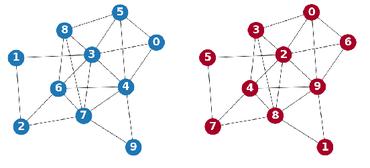Detecting drug-drug interactions using artificial neural networks and classic graph similarity measures
Drug-drug interactions are preventable causes of medical injuries and often result in doctor and emergency room visits. Computational techniques can be used to predict potential drug-drug interactions. We approach the drug-drug interaction prediction problem as a link prediction problem and present two novel methods for drug-drug interaction prediction based on artificial neural networks and factor propagation over graph nodes: adjacency matrix factorization (AMF) and adjacency matrix factorization with propagation (AMFP). We conduct a retrospective analysis by training our models on a previous release of the DrugBank database with 1,141 drugs and 45,296 drug-drug interactions and evaluate the results on a later version of DrugBank with 1,440 drugs and 248,146 drug-drug interactions. Additionally, we perform a holdout analysis using DrugBank. We report an area under the receiver operating characteristic curve score of 0.807 and 0.990 for the retrospective and holdout analyses respectively. Finally, we create an ensemble-based classifier using AMF, AMFP, and existing link prediction methods and obtain an area under the receiver operating characteristic curve of 0.814 and 0.991 for the retrospective and the holdout analyses. We demonstrate that AMF and AMFP provide state of the art results compared to existing methods and that the ensemble-based classifier improves the performance by combining various predictors. These results suggest that AMF, AMFP, and the proposed ensemble-based classifier can provide important information during drug development and regarding drug prescription given only partial or noisy data. These methods can also be used to solve other link prediction problems. Drug embeddings (compressed representations) created when training our models using the interaction network have been made public.
PDF Abstract

